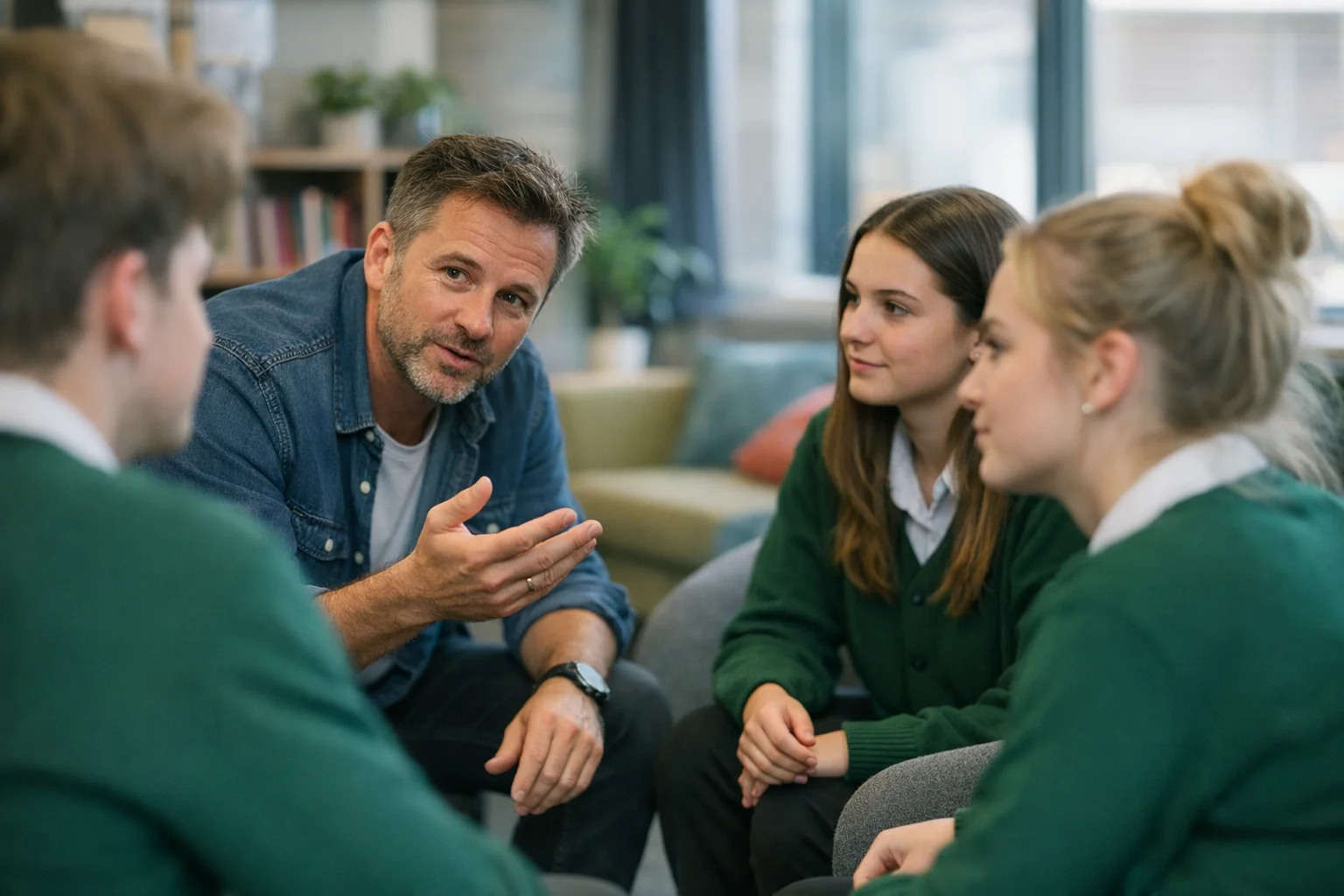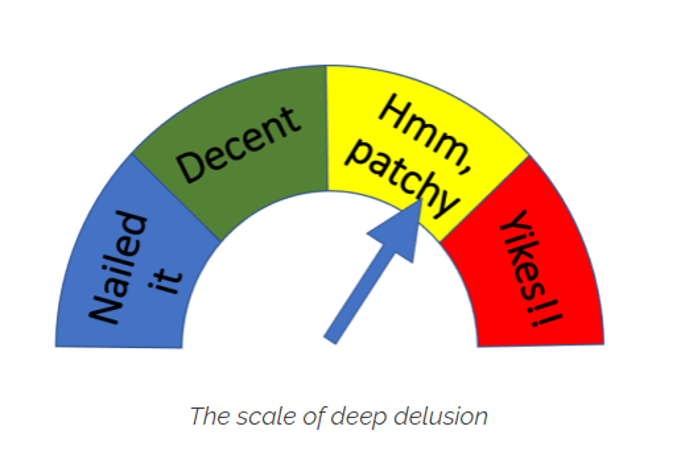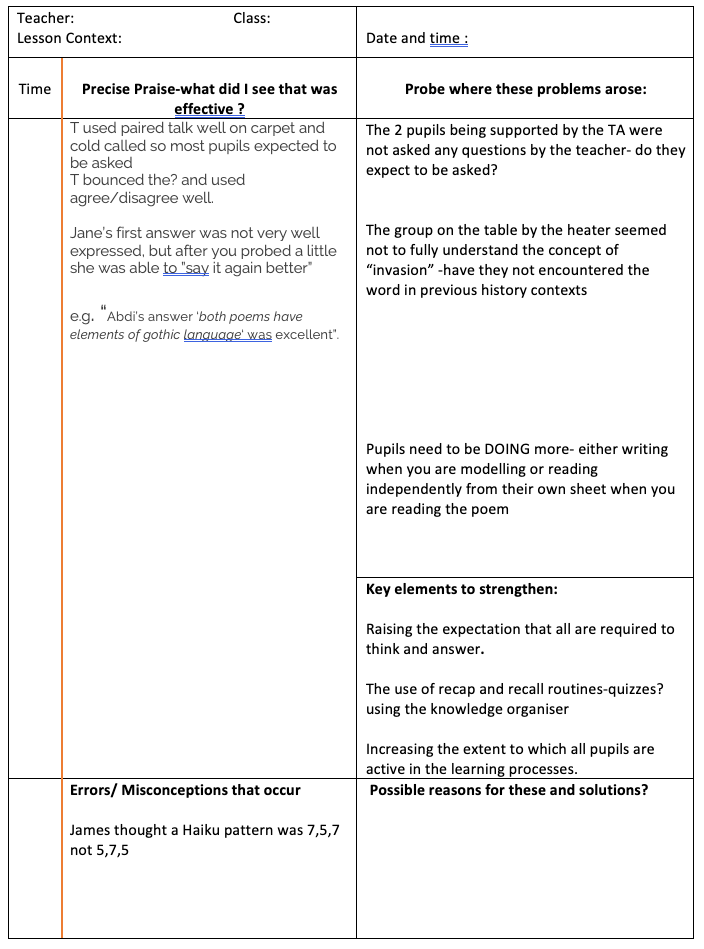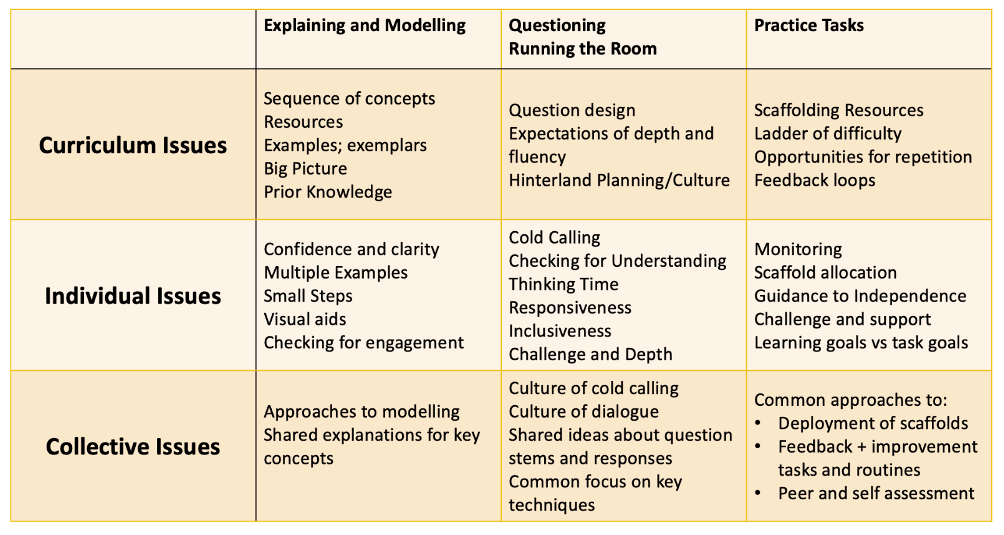Lesson Observations and Feedback - a Coaching Model
How can school leaders make lesson observations more effective using actionable teacher feedback?


How can school leaders make lesson observations more effective using actionable teacher feedback?
A key monitoring activity of leaders in Primary Schools has long been termly lesson observations of teachers operating in classrooms and then providing feedback that is intended to improve practice and the quality of teaching. Peer observations and giving effective feedback are highly sophisticated skills of effective teaching, and many leaders, not just those newly appointed to the role, or aspiring to take on the role, require coaching in the art if their time is to be used as effectively as it might be, i.e. for the specific purpose of improving teaching practice and through it the quality of provision for all pupils.
For too long, lesson observation policy has been plagued by the need to make and communicate judgements in the name of accountability. In my experience, those who feel they are being judged during peer observations, criticised and subjected to the opinions held by others are naturally resistant and defensive, and it becomes very difficult to open up and explore with them what, in their observed practice, worked well or otherwise in an open, non-threatening manner.
However, conversely, when professionals feel supported and trusted during structured teacher observations and can engage in low-stakes exploration of their real-life classroom challenges, they are more open to new possibilities and the idea that they can change for the better. They are much less likely to feel the need to mask their difficulties or deny the need for change in their approaches.
It is with this firmly in mind, that I strongly advocate, a coaching model that adopts a problem-solving paradigm, and seeks to develop the mindset required to ditch judgemental thinking and language once and for all. It is a model based upon professional dialogue that essentially recognises that what is going well, and probes those less-effective aspects, perceiving them to be problems that can be resolved by solutions arrived at collaboratively.
Observers cannot reliably “know” what learning is or is not taking place in a lesson. They can only hypothesise. I unashamedly quote a recent article by Tom Sherrington here (author of The Learning Rainforest and the Walk Thru Guides):

He talks about using “a scale of deep delusion” that might look a little like this :

He notes “Our system has been infused with the delusional and toxic idea that teaching standards can be evaluated on a scale - not just overall, but during individual lessons. I’ve met inspectors and leaders who, even when challenged and presented with research to the contrary - will assert that they personally can ‘just tell’ how good a lesson is. It’s tragic.”
We can delude ourselves, as experienced observers giving feedback, that the teachers will be motivated by what we say, and seek to improve their practice as a result. Sadly, this is often not the case with the traditional model. It can feel a bit like “chucking peas at an advancing tank, trying to get the driver to change direction”! The drivers themselves need to be involved. The reality is that any observed lesson is just a snapshot of a larger picture, and all an observer should do is focus on what they see, ask questions of the teacher subsequently, and above all, avoid making assumptions. The feedback that is given MUST move the teacher forward in their understanding of any problems that occurred and how it might be possible to address them.
Essentially, there are no good, bad, weak or strong lessons, and no observed teacher should be judged to be better or worse than any other in the classroom. There are simple problems with learning that occur in the changing contexts within which each teacher works on a daily basis; problems that need to be solved. The role of leaders in English state schools is to support their teachers, to offer insights into what they themselves observe, and then to help the individuals to problem solve.
When I work in English state schools as a coach to develop effective practice, it is either to coach the teacher being observed or to coach a leader to improve their formal lesson observation and feedback skills in their monitoring role. Teachers whose classrooms are the focus of the classroom observation should be very clear about which of these two purposes is the focus.
Typically in any lesson one of three things is going on:
Key points to note in the context of:
Point One
Point two: Is the teacher:
Point three:
Focus on these!
How you keep your notes is entirely up to you. Over the years I have used many methods, the most effective of which has been to simply divide an A4 sheet in half vertically and to record sequentially, often annotated by a time, what I see the pupils doing and saying, and looking to write down under why I think it might be a direct result of the teaching strategy being used. It usefully assumes that the learners’ responses are a direct result of something either + or - that the teacher is doing/has done. I use + and - and ? symbols all over the place as well as arrows and asterisks that only make sense to me but the eg below is a very simple idea you might like to try.

Tom Sherrington makes specific reference to the Bambrick-Santoyo Principles that enable him to feedback through “Precise Praise” (which notes specific examples of pupil response) and “Probing Questions” to record instances where there was a problem with the learning. You will find your own best way, but try a few ideas and see what works- keep it simple and focused on what you actually see happening. The precise examples are really important when giving feedback, a sheet I might use given these parameters, might be sectioned to look something like this:

1. CURRICULUM issues: These usually arise as a result of whole school policies that are part of wider planning than that of the specific teacher observed. The issue may well be when/how the teacher can make the time to explore the rationale for the materials they are expected to use or the particular concept they are supposed to be developing/linking with and are unfamiliar with or have not been part of the intent planning.
2. INDIVIDUAL issues: These are specific to the teacher themselves- how they run the room, use the resources, implement the routines etc. Possibly relating to their own subject knowledge or understanding of pedagogy . These are things that are within their control to change so are particularly important.
3. COLLECTIVE issues: These usually arise from a CPD initiative that all teachers are engaging with where consistency of approaches is important and these may well be more effectively addressed collectively with leaders and teachers together
These three focus areas are related to the three things you would be most likely to see in any lesson observed mentioned earlier and are referenced in the following chart:

Remember: “When professionals feel supported and trusted, and can engage in low stakes exploration of their real- life classroom challenges, they are more open to new possibilities, and the idea that they can change for the better. They are much less likely to feel the need to mask their difficulties, or deny the need for change in their approaches.” The purpose of the activity is for you as a coach to support, offer insights and help solve identified problems
As a general rule, I don’t ask “How do you think that went?” It is in my experience a recipe for disaster, and encourages people to defensively give excuses for things that went wrong, or to mistakenly overstate the success of the lesson. Be honest; if it was a bit of a disaster or disappointing, say so up front, for example say, ”Well, we both know there were a few problems there, so let’s see what we can do about them.” Almost all lessons have something praiseworthy to note, so do that first; “Thank you for letting me observe - there was lots to be proud of there, I think you would agree?”
1.PRAISE 2 .PROBE 3.PROBLEM and ACTION 4.PRACTICE 5.PLAN
And my golden rule is ENSURE THAT THEY TALK AT LEAST AS MUCH AS YOU DO!
Discuss the challenges that occurred within the lesson- theirs and those of the pupils. DON’T say things like “it would have been even better if….” This is a time for shared discussion of what did NOT go so well. e.g.“ Do you think that those two pupils working with the TA expected to have to answer your questions?” or “Where previously in the overall plan might pupils have come across invaders? Why do you think most of the pupils were able to remember the concept but those particular pupils did not? “
When working with whole staff or groups of teachers on whole school CPD or curriculum approaches where consistency of approach is really important, it can be useful to lead a session in which teachers pair up for discussions, and that those coaching use paired talk and cold calling strategies to increase the extent to which individual views are heard and taken account of.
Useful sentence starters that are particularly useful when working in this way but that are also highly effective when giving any feedback that reinforces the support and problem solving approach, and improves the chance of the recipient moving forward include:
“Sometimes I noticed……….”
“Where it was less effective was where……”
“One of the challenges we all have is……”
“It can be really difficult to ….. I wonder why that is?”
Never forget, it is only the teachers themselves that can make the improvements, and that they will if leaders facilitate the process.
In the context of lesson observation models and providing feedback to teachers that is designed to improve their effectiveness, leaders in schools need to rethink their roles.
Instead of setting out to judge how good the lesson or the teaching is, and where on the scale it should be placed, they should think about and discuss openly how this could be made better, and create the conditions where no one judges, they are there to help. Only then will this important monitoring activity be regarded, as it should be, as a supportive, non-judgemental ingredient in a healthy diet of professional learning.
Jenny Short 2022
Inspir.ed.
A key monitoring activity of leaders in Primary Schools has long been termly lesson observations of teachers operating in classrooms and then providing feedback that is intended to improve practice and the quality of teaching. Peer observations and giving effective feedback are highly sophisticated skills of effective teaching, and many leaders, not just those newly appointed to the role, or aspiring to take on the role, require coaching in the art if their time is to be used as effectively as it might be, i.e. for the specific purpose of improving teaching practice and through it the quality of provision for all pupils.
For too long, lesson observation policy has been plagued by the need to make and communicate judgements in the name of accountability. In my experience, those who feel they are being judged during peer observations, criticised and subjected to the opinions held by others are naturally resistant and defensive, and it becomes very difficult to open up and explore with them what, in their observed practice, worked well or otherwise in an open, non-threatening manner.
However, conversely, when professionals feel supported and trusted during structured teacher observations and can engage in low-stakes exploration of their real-life classroom challenges, they are more open to new possibilities and the idea that they can change for the better. They are much less likely to feel the need to mask their difficulties or deny the need for change in their approaches.
It is with this firmly in mind, that I strongly advocate, a coaching model that adopts a problem-solving paradigm, and seeks to develop the mindset required to ditch judgemental thinking and language once and for all. It is a model based upon professional dialogue that essentially recognises that what is going well, and probes those less-effective aspects, perceiving them to be problems that can be resolved by solutions arrived at collaboratively.
Observers cannot reliably “know” what learning is or is not taking place in a lesson. They can only hypothesise. I unashamedly quote a recent article by Tom Sherrington here (author of The Learning Rainforest and the Walk Thru Guides):

He talks about using “a scale of deep delusion” that might look a little like this :

He notes “Our system has been infused with the delusional and toxic idea that teaching standards can be evaluated on a scale - not just overall, but during individual lessons. I’ve met inspectors and leaders who, even when challenged and presented with research to the contrary - will assert that they personally can ‘just tell’ how good a lesson is. It’s tragic.”
We can delude ourselves, as experienced observers giving feedback, that the teachers will be motivated by what we say, and seek to improve their practice as a result. Sadly, this is often not the case with the traditional model. It can feel a bit like “chucking peas at an advancing tank, trying to get the driver to change direction”! The drivers themselves need to be involved. The reality is that any observed lesson is just a snapshot of a larger picture, and all an observer should do is focus on what they see, ask questions of the teacher subsequently, and above all, avoid making assumptions. The feedback that is given MUST move the teacher forward in their understanding of any problems that occurred and how it might be possible to address them.
Essentially, there are no good, bad, weak or strong lessons, and no observed teacher should be judged to be better or worse than any other in the classroom. There are simple problems with learning that occur in the changing contexts within which each teacher works on a daily basis; problems that need to be solved. The role of leaders in English state schools is to support their teachers, to offer insights into what they themselves observe, and then to help the individuals to problem solve.
When I work in English state schools as a coach to develop effective practice, it is either to coach the teacher being observed or to coach a leader to improve their formal lesson observation and feedback skills in their monitoring role. Teachers whose classrooms are the focus of the classroom observation should be very clear about which of these two purposes is the focus.
Typically in any lesson one of three things is going on:
Key points to note in the context of:
Point One
Point two: Is the teacher:
Point three:
Focus on these!
How you keep your notes is entirely up to you. Over the years I have used many methods, the most effective of which has been to simply divide an A4 sheet in half vertically and to record sequentially, often annotated by a time, what I see the pupils doing and saying, and looking to write down under why I think it might be a direct result of the teaching strategy being used. It usefully assumes that the learners’ responses are a direct result of something either + or - that the teacher is doing/has done. I use + and - and ? symbols all over the place as well as arrows and asterisks that only make sense to me but the eg below is a very simple idea you might like to try.

Tom Sherrington makes specific reference to the Bambrick-Santoyo Principles that enable him to feedback through “Precise Praise” (which notes specific examples of pupil response) and “Probing Questions” to record instances where there was a problem with the learning. You will find your own best way, but try a few ideas and see what works- keep it simple and focused on what you actually see happening. The precise examples are really important when giving feedback, a sheet I might use given these parameters, might be sectioned to look something like this:

1. CURRICULUM issues: These usually arise as a result of whole school policies that are part of wider planning than that of the specific teacher observed. The issue may well be when/how the teacher can make the time to explore the rationale for the materials they are expected to use or the particular concept they are supposed to be developing/linking with and are unfamiliar with or have not been part of the intent planning.
2. INDIVIDUAL issues: These are specific to the teacher themselves- how they run the room, use the resources, implement the routines etc. Possibly relating to their own subject knowledge or understanding of pedagogy . These are things that are within their control to change so are particularly important.
3. COLLECTIVE issues: These usually arise from a CPD initiative that all teachers are engaging with where consistency of approaches is important and these may well be more effectively addressed collectively with leaders and teachers together
These three focus areas are related to the three things you would be most likely to see in any lesson observed mentioned earlier and are referenced in the following chart:

Remember: “When professionals feel supported and trusted, and can engage in low stakes exploration of their real- life classroom challenges, they are more open to new possibilities, and the idea that they can change for the better. They are much less likely to feel the need to mask their difficulties, or deny the need for change in their approaches.” The purpose of the activity is for you as a coach to support, offer insights and help solve identified problems
As a general rule, I don’t ask “How do you think that went?” It is in my experience a recipe for disaster, and encourages people to defensively give excuses for things that went wrong, or to mistakenly overstate the success of the lesson. Be honest; if it was a bit of a disaster or disappointing, say so up front, for example say, ”Well, we both know there were a few problems there, so let’s see what we can do about them.” Almost all lessons have something praiseworthy to note, so do that first; “Thank you for letting me observe - there was lots to be proud of there, I think you would agree?”
1.PRAISE 2 .PROBE 3.PROBLEM and ACTION 4.PRACTICE 5.PLAN
And my golden rule is ENSURE THAT THEY TALK AT LEAST AS MUCH AS YOU DO!
Discuss the challenges that occurred within the lesson- theirs and those of the pupils. DON’T say things like “it would have been even better if….” This is a time for shared discussion of what did NOT go so well. e.g.“ Do you think that those two pupils working with the TA expected to have to answer your questions?” or “Where previously in the overall plan might pupils have come across invaders? Why do you think most of the pupils were able to remember the concept but those particular pupils did not? “
When working with whole staff or groups of teachers on whole school CPD or curriculum approaches where consistency of approach is really important, it can be useful to lead a session in which teachers pair up for discussions, and that those coaching use paired talk and cold calling strategies to increase the extent to which individual views are heard and taken account of.
Useful sentence starters that are particularly useful when working in this way but that are also highly effective when giving any feedback that reinforces the support and problem solving approach, and improves the chance of the recipient moving forward include:
“Sometimes I noticed……….”
“Where it was less effective was where……”
“One of the challenges we all have is……”
“It can be really difficult to ….. I wonder why that is?”
Never forget, it is only the teachers themselves that can make the improvements, and that they will if leaders facilitate the process.
In the context of lesson observation models and providing feedback to teachers that is designed to improve their effectiveness, leaders in schools need to rethink their roles.
Instead of setting out to judge how good the lesson or the teaching is, and where on the scale it should be placed, they should think about and discuss openly how this could be made better, and create the conditions where no one judges, they are there to help. Only then will this important monitoring activity be regarded, as it should be, as a supportive, non-judgemental ingredient in a healthy diet of professional learning.
Jenny Short 2022
Inspir.ed.